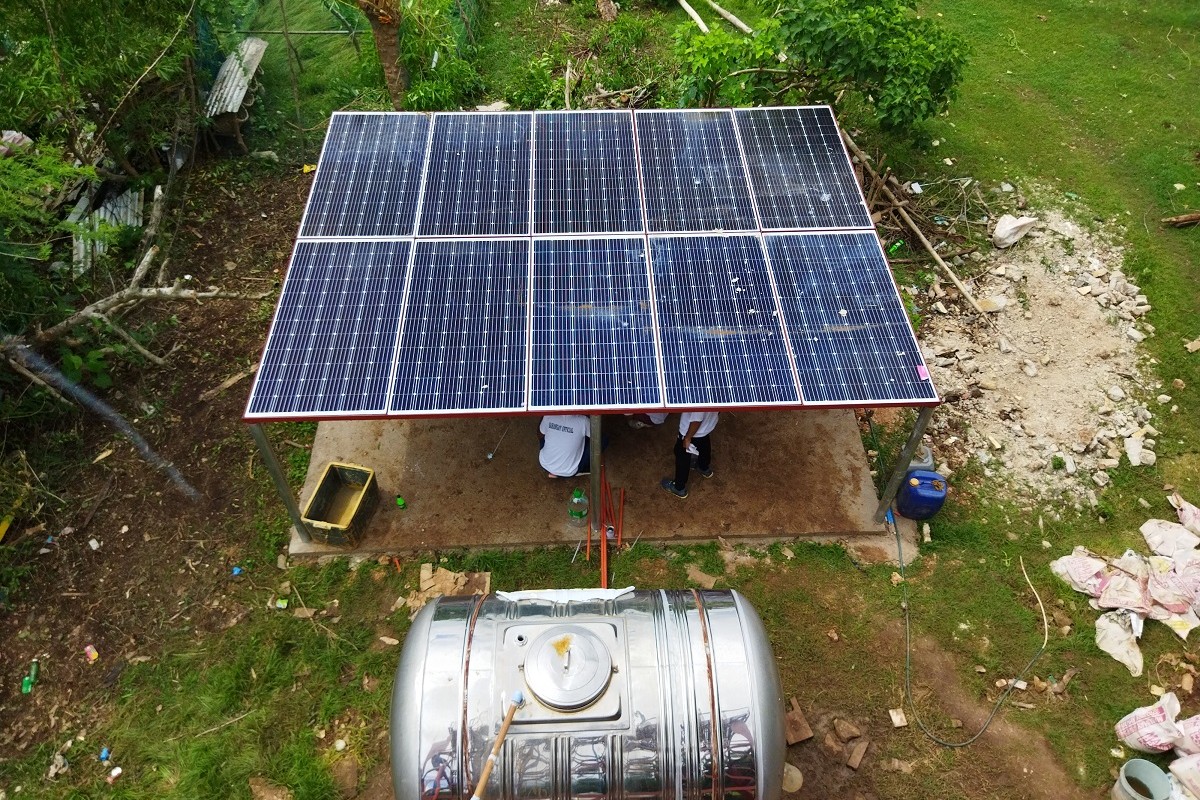
ODIONGAN, Romblon (DOST Mimaropa) -- As part of the Department of Science and Technology-MIMAROPA’s initiative to provide reliable and safe water access to water-scarce areas in the region, a solar-powered water pumping station was installed on Maniwaya Island, Sta. Cruz, Marinduque last July 9.
Maniwaya is an island municipality in Marinduque considered as one of the geographically isolated and disadvantaged areas (GIDA) in the Mimaropa Region. It can be accessed from the Buyabod Pier from the mainland via a motorized banca which will take around 30 to 45 minutes depending on the weather condition.
Just rainwater to get by
According to the 2015 data obtained from the Community-Based Monitoring System (CBMS), 74% or a total of 280 households or approximately 1480 individuals on the island do not have access to a reliable water source. During the rainy season, most of the residents rely on rainwater as their main water supply, collected using makeshift collectors attached to the gutter of their roofs. Rainwater is used for bathing, cooking, doing laundry and dishes, cleaning the house, and washing their animals. Some families drink it too as they cannot afford to buy purified drinking water. Some bathe in the open, like rivers or sea, just to conserve water. These put residents at high risk for water-borne diseases and other health hazards.
Making several trips for water
When the dry season comes, the residents are forced to gather water from a deep well located three kilometers away from the residential area. Most of the residents can only use habal-habal or motorcycle taxis and karitons as primary means to ferry the collected water since the road leading to the source is narrow. Sometimes, the residents have to make two or more trips to collect enough water to last them a day or more. Payment of Php 2.00 for every 30 liters of water is collected for the maintenance of the deep well while others who cannot physically gather their water are also compelled to pay an additional Php 40-50 for delivery costs.
Businesses like resort owners also expressed concerns about the negative impacts of having no reliable water source in tourism on the island. Maniwaya Island, with a long stretch of powdery white sand beaches, is now considered a tourist gem of the province. However, they fear that without clean water, people would refuse to go to the island which will gravely affect livelihood.
Water closer to homes
Now through the Solar-powered water pumping station, a total of 76 households or about 340 members of the community are provided with access to a sustainable supply of water. The station was built just 1.5 kilometers away from the residential area and connects the residents to a water source via a communal faucet or tap stand located at the center of the barangay. It has a total capacity of 2000L which can be shared by the residents and business owners within the area.
Residents now enjoy affordable and safe water closer to their homes for drinking and domestic use, instead of having to drive or walk three kilometers several times a day just to get by. With an assured protected source, residents are now free from the danger of contracting diseases carried through contaminated water. The resorts near the solar-powered water pumping station were also thankful as they can now provide cleaner water and the environment for their customers.
The collection of P2.00 per 30 liters of water will still be imposed by the barangay and collected fees will now be used for the maintenance of the solar-powered water pumping station.
“Nagpapasalamat po kami sa DOST-Mimaropa dahil nailapit po sa amin ang tubig. Hindi na po kami mahirapan magtabo o maghinatay ng ulan” said Julian Penon, a 59-year-old resident in the island.
The solar-powered pumping water station was provided as part of DOST’s Community Empowerment through Science and Technology (CEST) program that aims to transform the quality of life of disadvantaged communities in the country. The initiative was realized in collaboration with the Local Government Unit of Sta. Cruz. LGU-Sta. Cruz will monitor and maintain the facility and is committed to champion the science and technology, particularly the use of solar energy systems, in the province. (PR)



